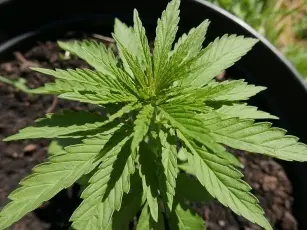Contents

CBD oil is a natural cannabinoid obtained from hemp (fiber), and processed is available in various forms: liquid, paste or capsules. Cannabidiol (CBD) has therapeutic properties and is devoid of psychoactive properties. Moreover, CBD reduces the psychoactive effect of THC [1].
Cannabidiol CBD – general characteristics
CBD is an organic chemical compound, one of the 80 cannabinoids found in hemp. It was isolated in the 30s, but it was not until the 60s that a team of scientists led by Professor Raphael Mechoulam [2] presented a detailed characterization of cannabidiol. This does not mean that the benefits of CBD have not been used before; hemp has been used since ancient times, but only the effect was known, not the mode of action. Cannabidiol is a substance with the chemical formula C21H30O2 and molecular weight: 314,46 g/mol. It is obtained by extraction and, therapeutically, it is the most desirable component of hemp. It does not show psychoactive effects, but its numerous health-promoting and therapeutic properties have been proven many times.
 CannabidiolImage source: pl.wikipedia.org/wiki/Cannabidiol
CannabidiolImage source: pl.wikipedia.org/wiki/Cannabidiol
Cannabinoids, like neurotransmitters, react with cannabinoid receptors of nerve cells, causing specific reactions. There are two types of cannabinoid receptors in the human body: CB1 (in the nervous system) and CB2 (in the immune system). Studies show that CBD acts as an antagonist of cannabinoid receptors, thanks to which it has numerous sedative, antipsychotic, anxiolytic and antidepressant properties[3].
The effects of using CBD oil
Cannabidiol has a positive effect on people suffering from various types of mental disorders. It has an antipsychotic effect, as well as supporting the treatment of alcohol and nicotine addictions. It affects the 5HT1A receptor and affects serotonergic transmission, thanks to which it can be used to relieve anxiety and depression. In addition, it is excellent in the treatment of epilepsy, and more and more often it is suggested that it may have a neuroprotective effect by protecting the myelin sheath of nerve fibers[3]. There are indications that cannabidiol may have an anti-inflammatory effect. Research is underway on its use in ischemic liver failure, liver surgery and shock; in encephalitis associated with sepsis, cardiomyopathy associated with diabetes, pneumococcal meningitis, and even in the treatment and prevention of cancer[3][4]. The use of CBD oil in medicine potentially creates great opportunities.
Harvesting CBD oil
Cannabidiol is a 100% natural substance obtained from hemp. The best method is extraction with supercritical carbon dioxide, thanks to which you can obtain pure CBD oil (in Poland, CBD oil is produced using this method, e.g. Cannabigold). The quality and purity of the oil is of paramount importance, because only such an extract has therapeutic properties. CBD can be obtained from various strains of hemp, and its content varies from 0,6% to 2%. Depending on the extraction method, it is possible to obtain from 60% to as much as 95% of the total volume of the substance (the highest efficiency is obtained using supercritical CO2 extraction). Depending on many factors, CBD oils can contain from 1% to 50% CBD concentration[5].
Cannabidiol in the service of health
Scientific and medical studies prove that cannabinoids have a wide therapeutic potential. In 2008, in the article Cannabidiol: from an inactive cannabinoid to a drug with a wide spectrum of action, a number of conclusions were made that CBD oil has the following properties:
- antiemetic
- antipsychotic
- anti-inflammatory
- antioxidant
- anti-cancer
- antidepressants
- anticonvulsants
In addition, CBD has potential in the treatment of diseases such as: arthritis, diabetes, multiple sclerosis, alcoholism, chronic pain, schizophrenia, post-traumatic stress disorder, antibiotic-resistant infections, epilepsy and endometriosis. Research on the use of CBD oil and other cannabinoids in medicine is ongoing, and new opportunities are discovered every year. We still have a lot to learn to understand the full potential of these relationships. Sources:Ryszard Kaniewski, Irena Pniewska, Andrzej Kubacki, Małgorzata Strzelczyk, Magdalena Chudy, Grzegorz Oleszak, “Hemp (Cannabis sativa L.) – a valuable useful and medicinal plant”.“Raphael Mechoulam” – Wikipedia, the free encyclopediaPaweł Siudem, Iwona Wawer, Katarzyna Paradowska, “Hemp and Cannabinoids”.Paweł Śledziński, Agnieszka Nowak, Joanna Zeyland, Ryszard Słomski, “Endocannabinoid system and anticancer properties of cannabinoids”Medical marijuana – educational and informational website, “What is CBD oil”, “CBD oil”Paola Massi, Marta Solinas, Valentina Cinquina, Daniela Parolaro, „Cannabidiol as potential anticancer drug”.









